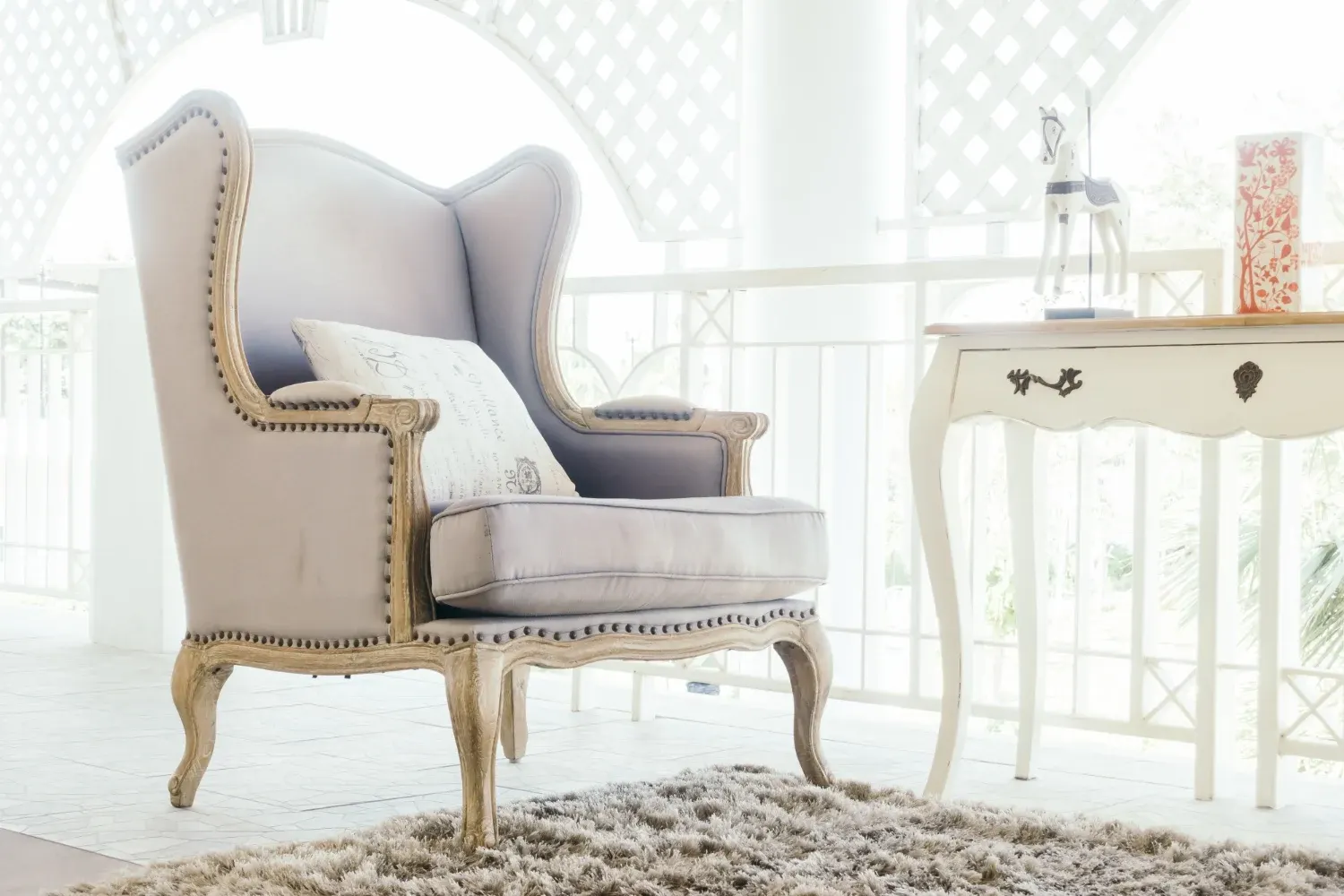Mold on fabric furniture can compromise both the integrity of the material and the health of the home’s occupants. Effective removal is critical to preserving the life of the furniture and ensuring a clean, safe living environment.
This blog post will guide you through the necessary steps on how to remove mold from fabric furniture. It’ll also detail both the products and procedures that yield the best results without compromising the fabric’s quality or the well-being of individuals in the vicinity.
Key Takeaways
- Assess material sensitivity and conduct spot tests before using any cleaning solutions.
- Use protective gear like gloves and a HEPA filter mask when dealing with mold.
- Consider using sunlight exposure to help dry and disinfect the fabric furniture.
- If the mold infestation is extensive or stubborn, it is advisable to hire professional mold remediation services.
What Causes Mold on Fabric Furniture?
Several factors contribute to the growth of mold on fabric furniture, including high humidity, warmth, organic material for the mold to feed on, and poor ventilation. Mold and mildew thrive in environments with persistent moisture or water damage, particularly when furniture is exposed to these conditions. The presence of dust, dirt, and other organic debris on upholstery provides a rich food source that mold spores can easily colonize.
Upholstery fabric, with its intricate weaves and fibers, is particularly susceptible to mold growth. It can trap moisture and organic particles, creating an ideal breeding ground for fungi. The combination of these elements results in the proliferation of mold colonies, which can cause discoloration, deterioration of the fabric, and a musty odor.
To underscore the complexity of the issue, consider the following contributing factors:
- High Humidity: Furniture in humid environments is more likely to harbor mold spores.
- Water Damage: Spills, flooding, or dampness can lead to mold infestations.
- Organic Material: Accumulated dust, skin cells, and food particles provide nutrients for mold.
- Poor Ventilation: Lack of airflow in confined spaces encourages mold formation on upholstery.
Addressing these root causes is essential to preventing and remedying mold infestations on fabric furniture.
Precautions Before Removing Mold from Fabric Furniture
Before attempting to remove mold, assess the material’s sensitivity to acidic solutions. Conduct a spot test with your chosen cleaning agent to avoid damaging the upholstery. It is critical to take appropriate precautions to ensure both the safety of the individual performing the cleaning and the integrity of the fabric. To prevent inhaling mold spores, which can pose significant health risks, use a high-efficiency particulate air (HEPA) filter mask or a respirator. Wear gloves to protect your hands. Clothing such as long sleeves and pants should be donned to shield the skin.
In the cleaning environment, use a dehumidifier to reduce moisture levels. This will inhibit further mold growth and aid in the drying process post-cleanup. If the mold contamination is extensive or if the fabric is particularly delicate, it may be prudent to engage a professional mold removal service. These experts have the necessary equipment and expertise to clean mold.
Always prioritize safety and the preservation of the furniture when addressing mold issues.
10 Methods on How to Remove Mold from Fabric Furniture
Proven methods are necessary to remove mold from fabric furniture and restore its aesthetic. Here are 10 methods to remove mold from fabric furniture.
1. Expose the Furniture to Sunlight

Harnessing the upholstery’s exposure to sunlight can aid in combating mold proliferation. This utilizes natural UV rays and warmth to inhibit mold growth and eradicate odors. A meticulous approach to this method involves:
- Select a sunny day with ample sunshine and low humidity. Ensure effective drying and mold spore eradication.
- Position the furniture to receive maximum sunlight exposure. Rotate it periodically to ensure all mold-affected areas dry in the sunlight.
- Allow the furniture to air dry thoroughly. Prevent any residual moisture that could encourage mold regrowth.
- Monitor the drying process. Avoid overexposure to the sun, which may fade the fabric or cause other damage.
Using these detailed steps can result in a mold-free piece of fabric furniture, with the added benefit of a natural, fresh scent.
2. Use a Bleach Solution
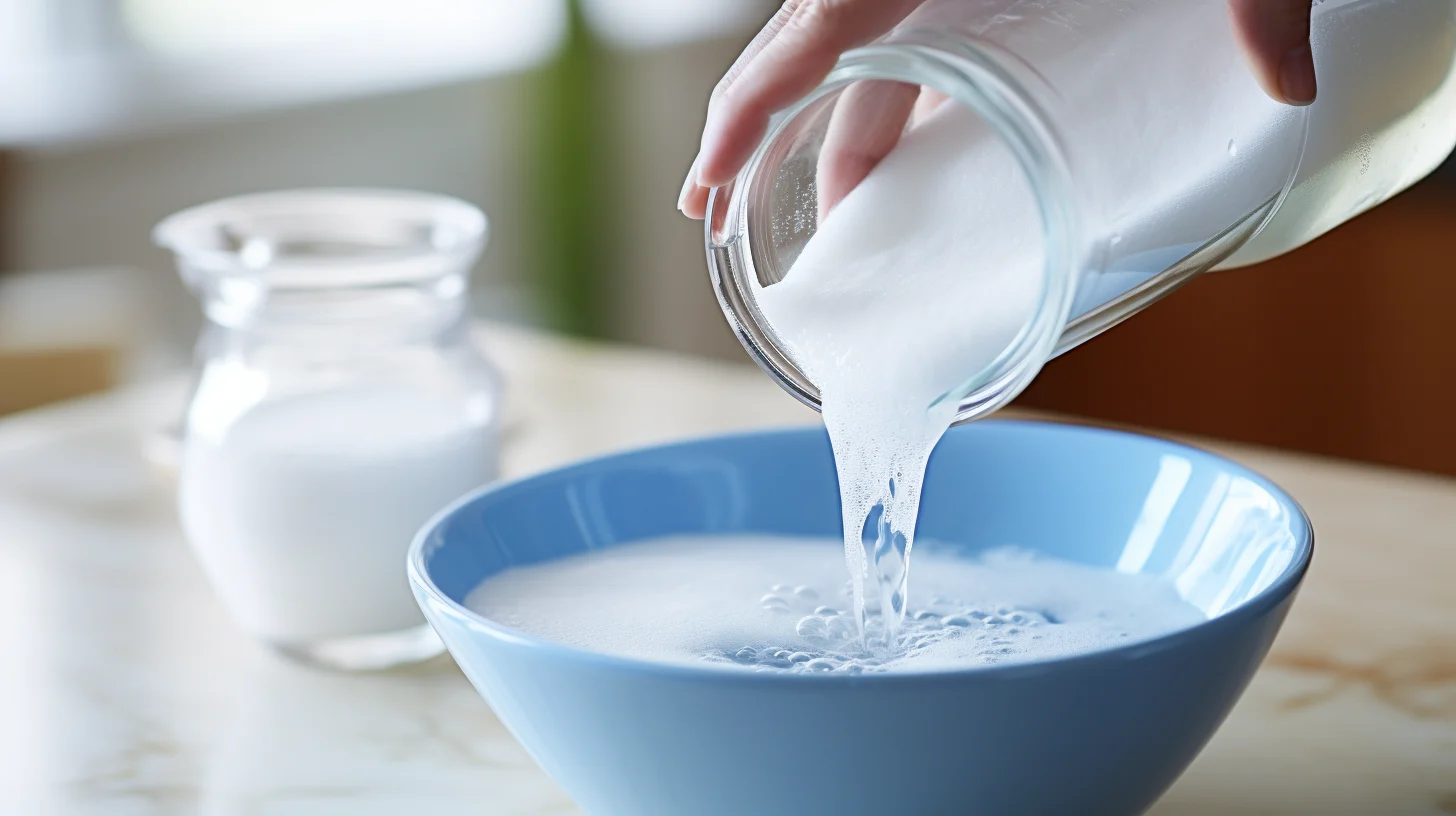
Another method involves using a bleach solution. This is particularly useful for non-colorfast fabrics and items that tolerate stronger damage-free cleaning agents.
Bleach, which contains sodium hypochlorite, is a potent antimicrobial agent that kills the mold. To use bleach safely and efficiently, one must dilute it properly with water. Generally, we recommend a ratio of one cup of bleach to a gallon of water.
Apply the bleach solution sparingly to the moldy areas. This can ensure that the fabric is not oversaturated, preventing damage. After application, allow the fabric to sit for several minutes to maximize its mold-killing action. Then rinse thoroughly with clean water.
3. Use a Vacuum to Remove the Mold
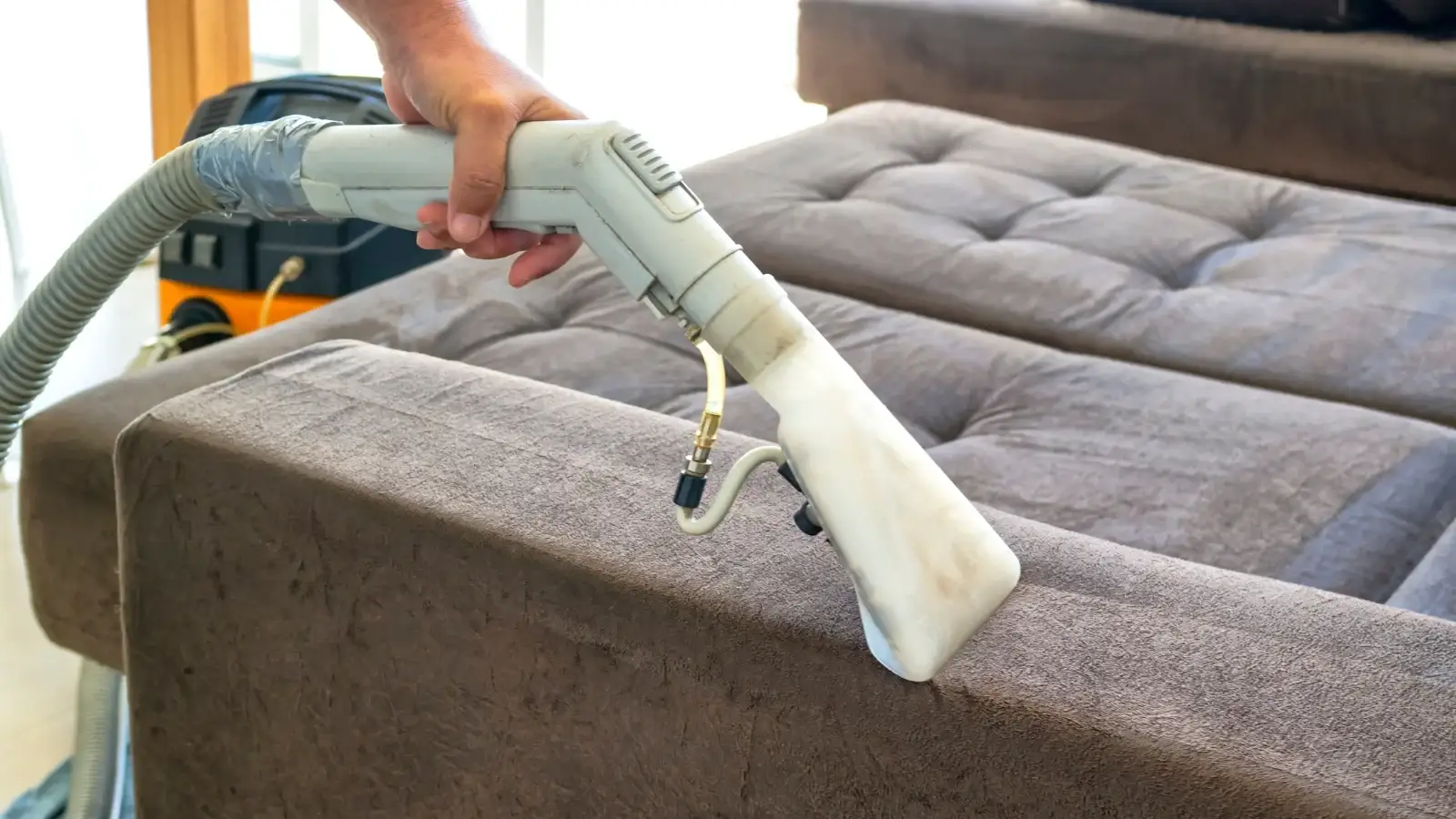
Initiating the mold removal process, you can use a vacuum equipped with a HEPA filter to extract mold spores from the fabric furniture. This step is critical to ensuring that these allergens are contained and not dispersed into the environment.
- Use a brush attachment: To gently agitate the mold on the upholstery, allowing the vacuum to capture more spores.
- HEPA filter: Ensures that the vacuum does not release mold spores back into the air.
- Discard the vacuum bag: After vacuuming, promptly discard the vacuum bag to prevent spores from proliferating.
- Repeat if necessary: Some infestations may need many vacuum sessions to fully remove mold from the fabric.
4. Use White Vinegar
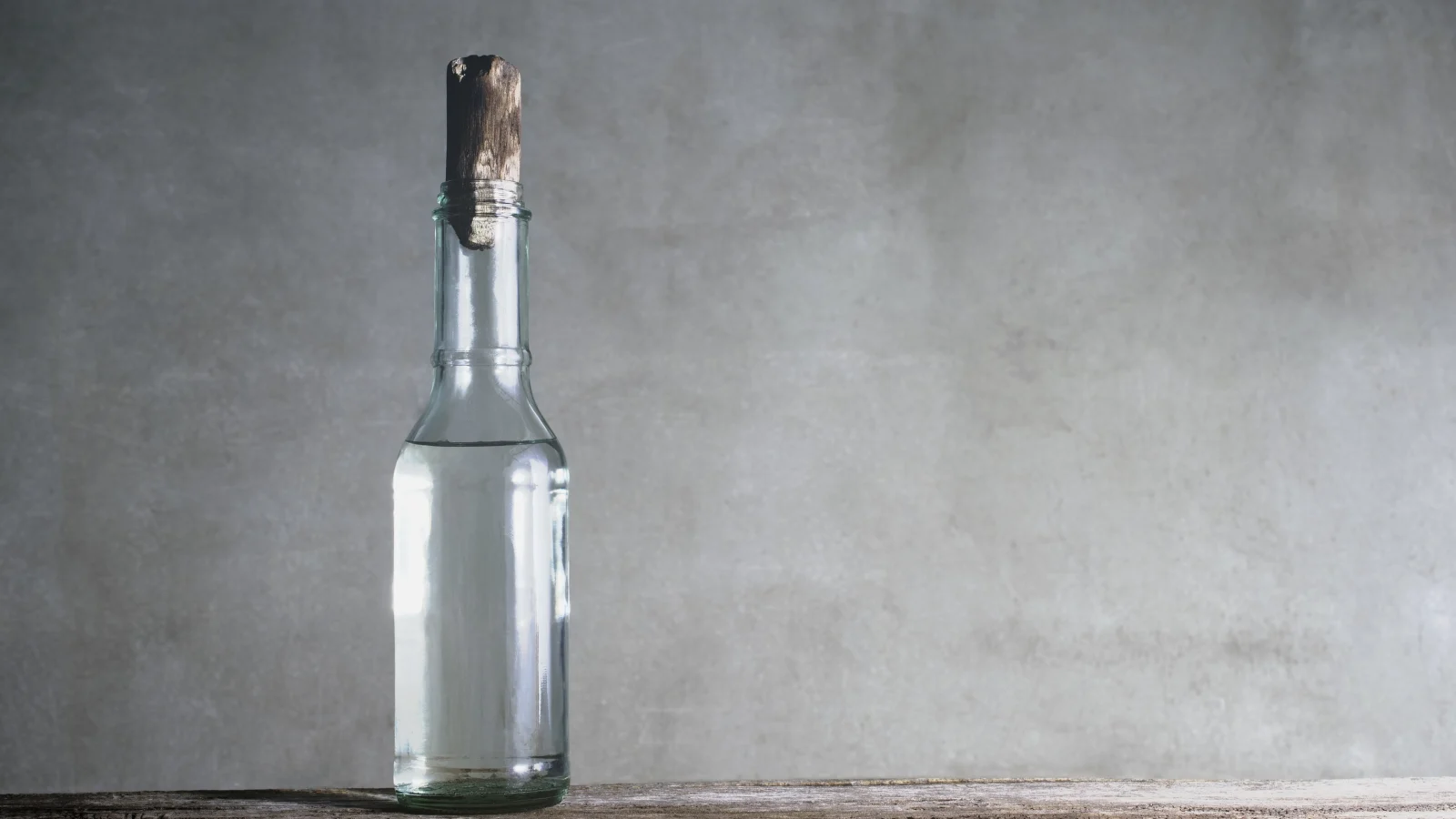
We recommend using white vinegar to remove mold from fabric furniture. With its natural acidity, white vinegar can kill mold without harming the fabric. This common household item is not only cheap but also an environmentally friendly cleaning solution.
To use vinegar for mold remediation, prepare a diluted solution by mixing equal parts white vinegar and water in a spray bottle. Apply the solution liberally to the moldy areas of the furniture. Allow it to sit for an hour to penetrate and break down the mold spores.
After the allotted time, use a soft brush or cloth to gently scrub away the mold. Finally, wipe the surface clean with a damp cloth to remove any residual mold and vinegar solution.
5. Use Carbonated Water or Baking Soda
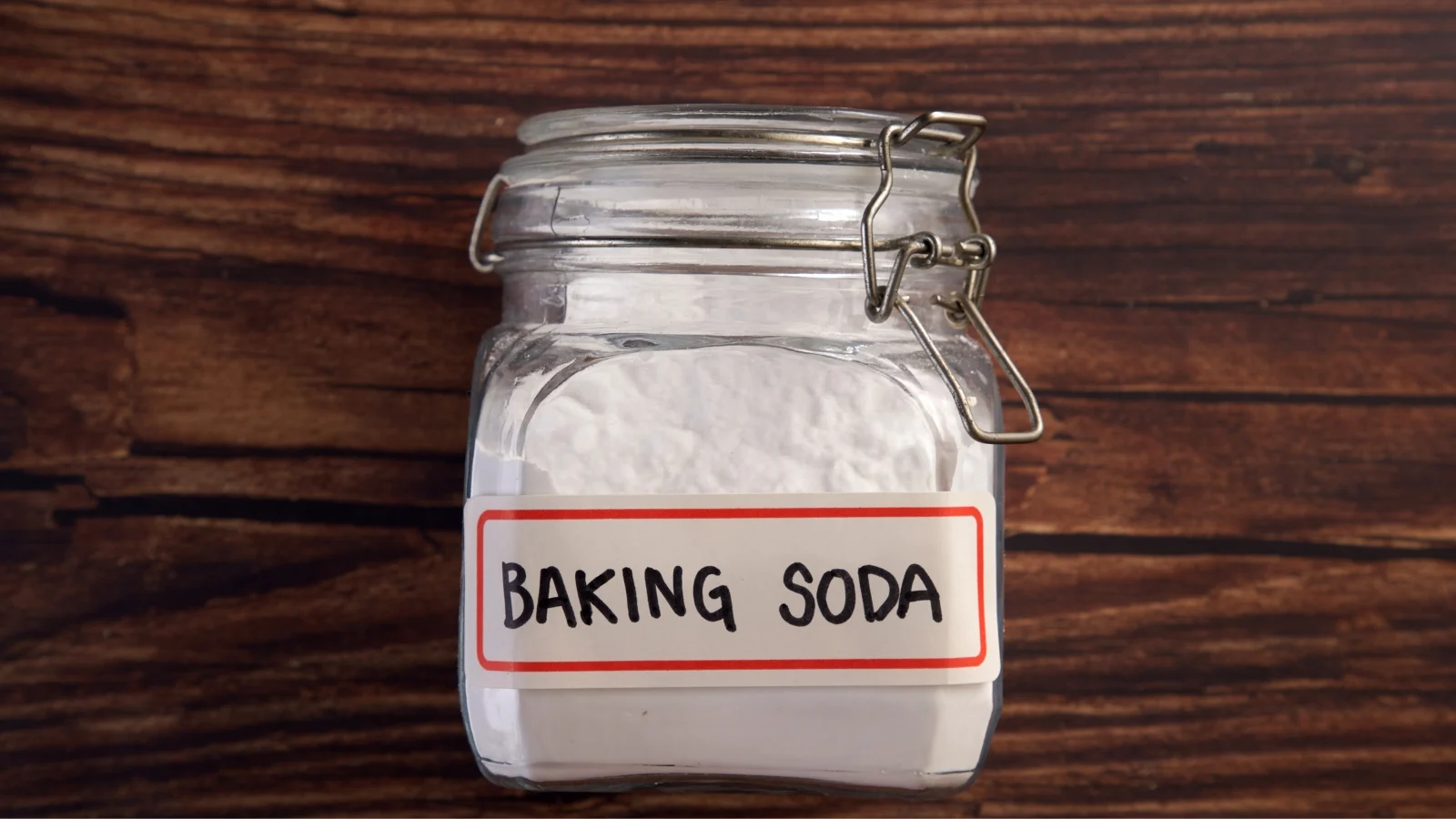
There are also a few effective alternatives that you can use. Carbonated water and baking soda are two options that can lift and neutralize spores without causing any damage to the material.
Carbonated water is a good choice because its effervescence aids in breaking down the structure of the mold. This makes it easier to wipe away from the upholstery. Apply the carbonated water to the affected area and scrub it with a clean cloth.
Baking soda is another useful option. As a mild alkali, it has the ability to absorb moisture and odors. When applied to moldy fabric furniture, it can help to dehydrate the mold, making it easier to remove. Sprinkle baking soda over the affected area. Let it sit for a few hours before vacuuming it up.
To achieve comprehensive mold eradication, combine the use of these agents with brushing or vacuuming. This will ensure that all mold spores are removed.
6. Use Liquid Soap
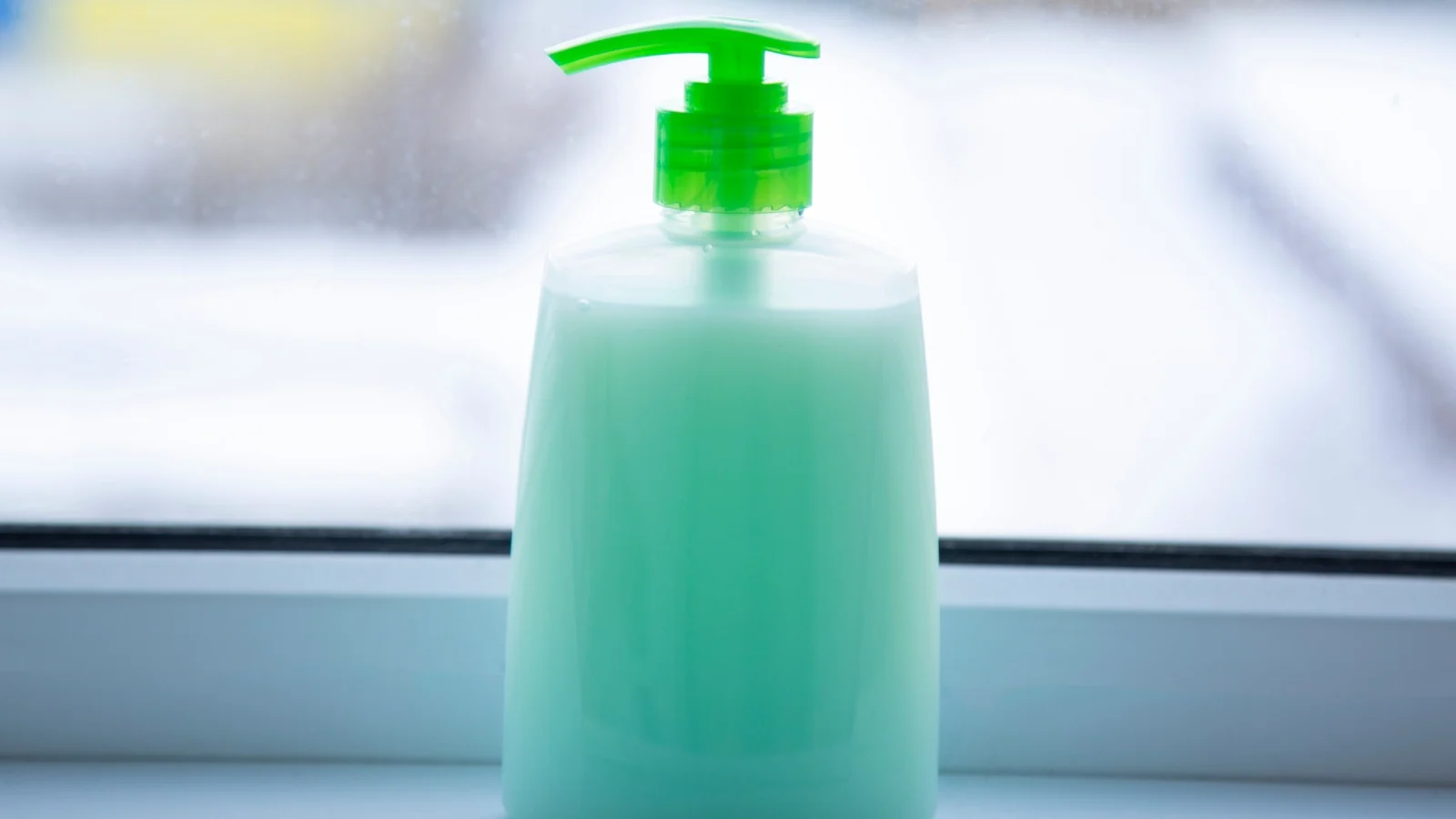
Using liquid soap presents another effective strategy for eradicating mold from fabric furniture. It complements the previously mentioned methods, such as baking soda and carbonated water.
To start the cleaning process, prepare a solution by diluting a mild detergent with water. Submerge a sponge into this mixture and wring it out to avoid over-saturating the fabric.
Apply the solution to the mold-affected areas of the fabric furniture. Use a circular motion to loosen the mold spores. Take care not to further embed the mold into the fabric fibers.
After scrubbing the area, rinse the sponge with clean water and remove any soap residue from the furniture. This step ensures that no soap scum is left behind, which may attract more dirt or mold growth.
7. Use Clove Oil and Salt

Clove oil is famous for its antifungal properties. Combining it with salt can create an effective solution for removing mold. Using the solution harnesses the potent anti-mold qualities of clove oil to address the issue at its source. The salt acts as an abrasive to help physically remove the mold from the fabric.
- Prepare the Solution: Mix clove oil with salt to form a paste. The paste can penetrate the upholstered furniture fibers.
- Apply to the Affected Area: Spread the paste over the moldy sections.
- Allow to Sit: Let the mixture sit to disrupt and loosen the mold structure.
- Clean Off: After enough time, thoroughly vacuum or brush off the residue to remove the mold.
8. Use Rubbing Alcohol
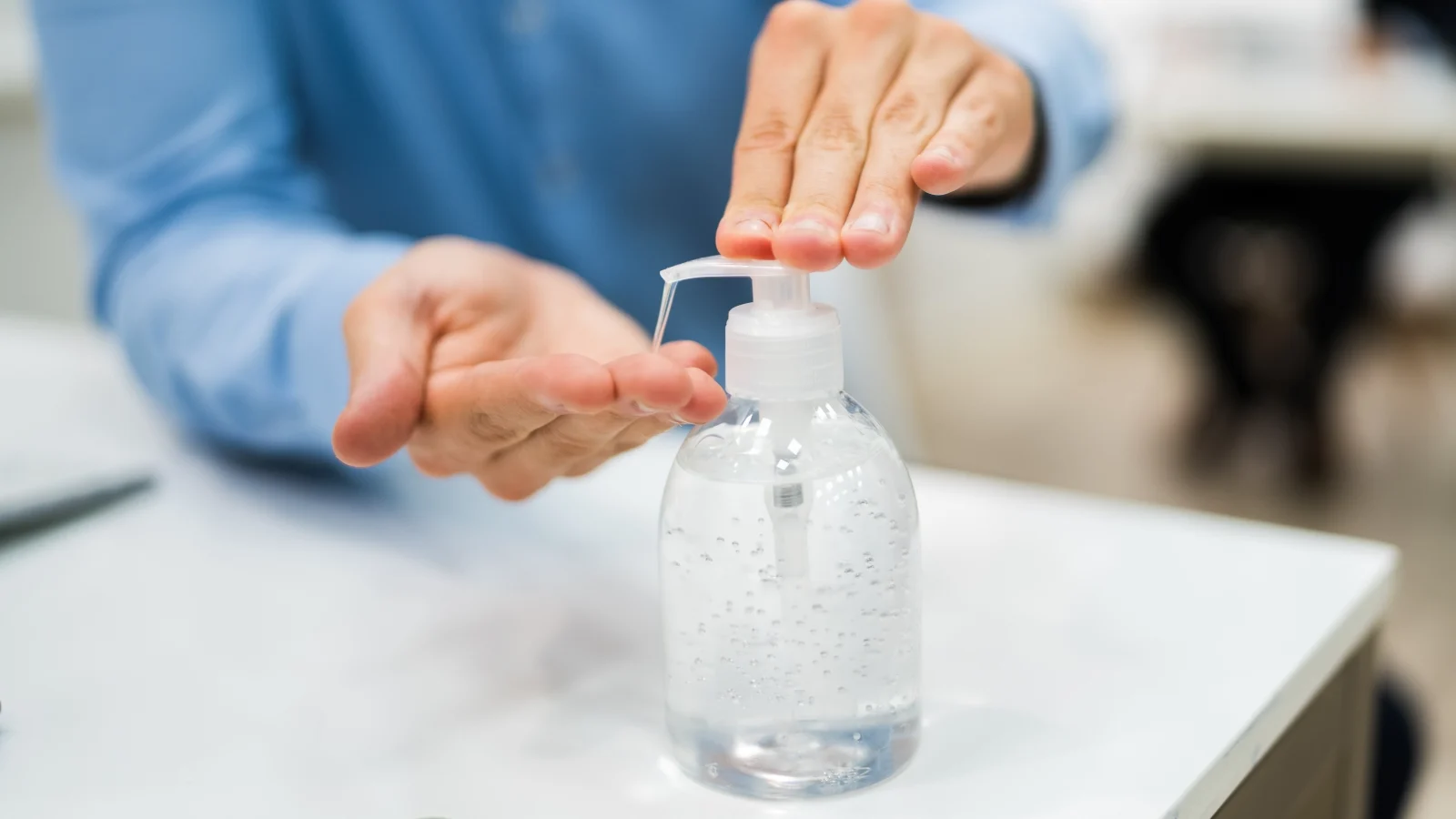
Another effective strategy involves using a rubbing alcohol solution. Prepare a 1:1 mixture of rubbing alcohol and water to treat the affected area.
This solution is adept at killing mold spores. It can help clean the mold without adding excessive moisture to the upholstery. This is crucial to prevent further mold growth. Before applying the mixture broadly, conduct a spot test on a discreet section of the furniture to ensure it does not stain or discolor fabrics.
Once confirmed, gently wipe the moldy regions with the solution. Then, allow the furniture to dry completely in a well-ventilated space or under sunlight to remove any remaining moisture and odors.
9. Use Hydrogen Peroxide
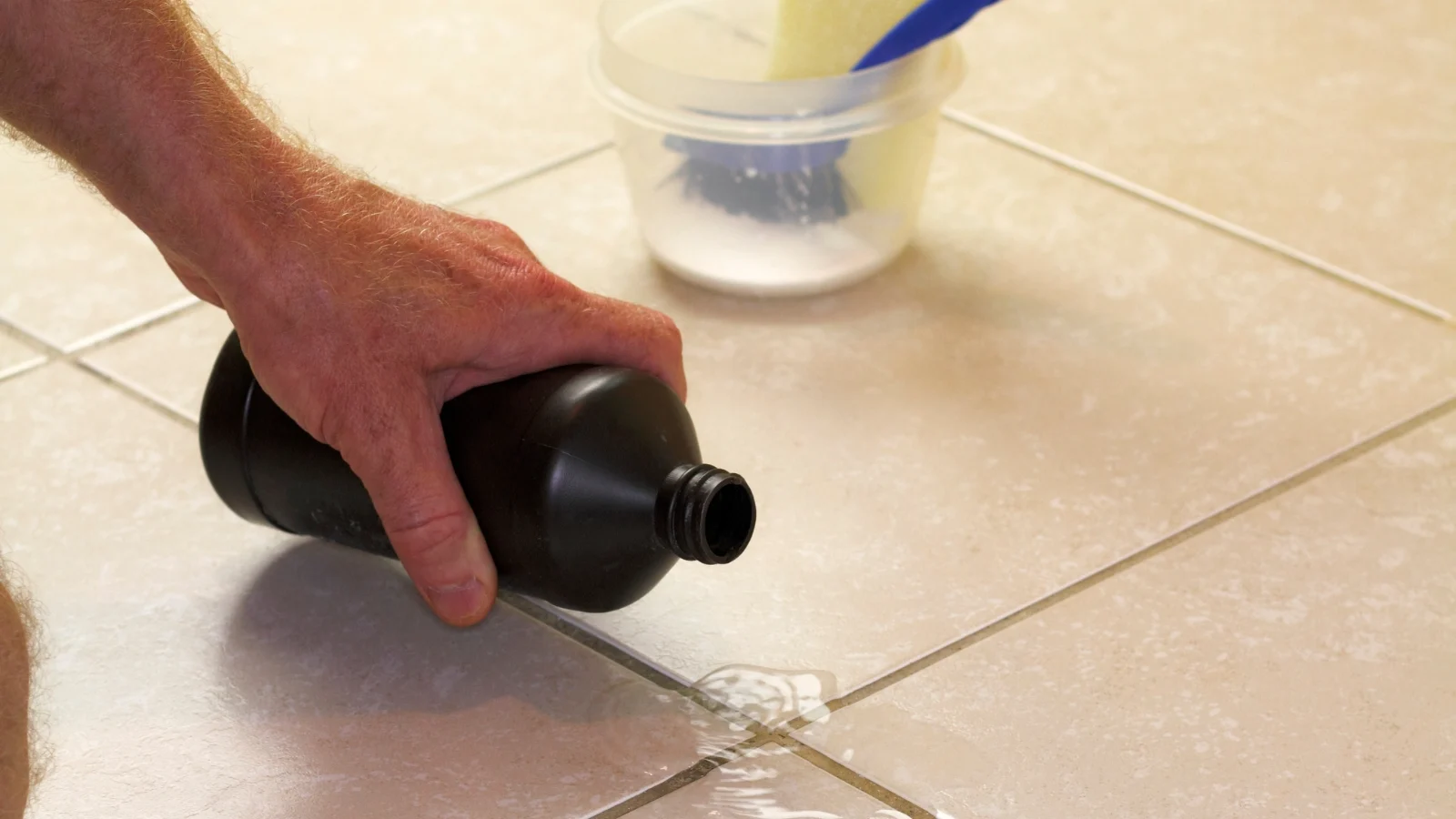
To combat mold on fabric furniture, you can apply a 3% hydrogen peroxide solution directly to the affected areas. But, you should thoroughly soak up the mold stains before rinsing and drying as part of the remediation process. This method can remove both mold and the unsightly stains it causes.
- Apply the hydrogen peroxide to saturate the mold growth. Allow the solution to penetrate the fabric and break down the mold’s structure.
- Use a soft cloth to scrub the area. This helps to lift and remove the mold from the fabric fibers.
- Rinse the treated area with a damp cloth to remove any residual hydrogen peroxide and mold particles.
- Let it dry completely, preferably in sunlight. This can prevent any potential for mold regrowth and aid in stain removal.
10. Contact a Professional Upholstery Mold Remediation Company
When dealing with extensive or stubborn mold infestations on upholstered furniture, it is advisable to hire a professional mold remediation company. Such companies own the necessary expertise and equipment to remove the mold without damaging the delicate materials.
These specialized firms use a systematic approach to assess the type of mold, its impact on the upholstery, and the potential threat to your health. They use advanced HEPA filtration systems to contain and prevent the spread of mold spores during the remediation process.
Their technicians are adept at handling various textiles. They ensure that the integrity of the fabric is maintained while thoroughly eradicating the mold issue.
How to Prevent and Get Rid of Mold and Mildew
It is essential to implement preventative measures and effective cleaning techniques to maintain a mold-free environment.
To prevent mold in the first instance, controlling humidity levels is imperative. Regularly use dehumidifiers, especially in humid climates or during wet seasons, to maintain an indoor humidity level below 60%. This practice is key to creating an inhospitable environment for mold and mildew. Moreover, opening windows can help increase air circulation, replacing stagnant air with fresh, dry air. This can reduce the risk of mold growth.
About cleaning, promptly address any spills or moisture accumulation to prevent mold’s foothold. Clean and vacuum fabric furniture regularly to remove organic debris that mold could use as food.
Conclusion
In conclusion, removing mold from fabric furniture requires a strategic approach with safety measures, proper cleaning techniques, and an understanding of the underlying causes.
Implementing preventative measures is equally critical to deterring future mold proliferation.
Proper procedures and techniques can help maintain upholstered furnishings and protect indoor air quality.
Learn more fabric knowledge from Longan Craft Blog, dive into the fabric world with Longancraft


